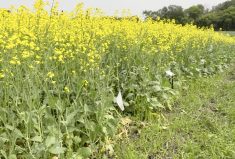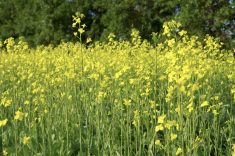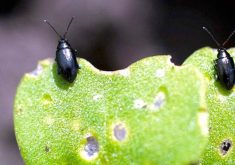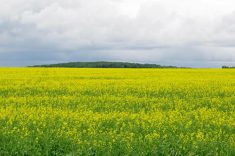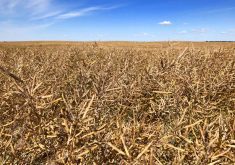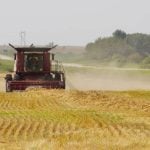A Manitoba-based canola-breeding consortium says the current wave of lifescience mergers isn’t necessarily bad news for them.
Winnipeg’s BrettYoung and Morden’s DL Seeds, a joint venture of two of the largest European oilseed rape-breeding companies, have been working together for a number of years to bring canola hybrids to market. They’ve seen their market share in Western Canada double over the past five years.
Eric Gregory, BrettYoung’s director of marketing, said during a recent facility tour the company hopes to build on that track record in the new competitive landscape. That’s despite some concern in the trade about market concentration, particularly in the area of genetic traits for canola, such as the various herbicide-tolerant platforms.
Read Also

Resolving Chinese tariffs will require balancing act
China’s tariffs are very clearly tied to Canada’s decision to impose our own tariffs on its electric vehicles and steel and aluminium.
“It does make for some uncertainty throughout the industry, but we also think it may present some new opportunities,” Gregory said.
Significant
One advantage the company has is its solid background in canola breeding and the relative strength of that program when stacked up against the major players.
Kevin McCallum, DL Seeds’ general manager, said they’re able to draw on the substantial horsepower of their parent companies, Lembke and DSV, which have more than 50 per cent of the European canola seed market, and canola-breeding activity in Europe, Canada and Australia, through various subsidiaries. In total, there are 16 canola breeders around the world contributing genetic material to the pipeline.
“That puts us on par, in canola, with the largest breeding programs in the world,” said McCallum.
Those breeders are able to draw on the unique genetic material that program has created over the years, including a program to search for genetic disease resistance in wild rapeseed varieties, and incorporating those traits into high-yielding modern hybrids.
“We feel if we continue to produce good hybrids, we will continue to be able to make those arrangements with patent holders to access their technology,” McCallum said.
The key focus of DL Seeds is taking this wide array of genetic material and creating hybrids suited to Western Canada, including a good disease-resistant package.
To that end, the company has released its first ‘improved resistance’ hybrids that fight sclerotinia infections. It’s a small but significant step in battling the ongoing challenge of these infections, Gregory said.
“Some of the companies are telling growers they can park the sprayer, but that’s not the approach we’re taking,” he said. “We’re saying this is another valuable tool that should be used with all the other available tools, like fungicides and cultural practices.”
The other major canola diseases, blackleg and clubroot, are also major targets for the breeding program.
Screening
A greenhouse complex, operated by DL Seeds at BrettYoung’s main site at the junction of the Perimeter Highway and Provincial Road 330, gives some insight into the screening process.
Here plant pathologist Sakaria Liban and his colleagues operate a program to infect canola seedlings with blackleg. They also apply a new industry-wide ‘infection protocol’ for sclerotinia that allows breeders and pathologists to reliably test for resistance. A similar program exists in Alberta for clubroot, but concern over spreading the disease limits that research to Alberta, where it’s already endemic.
Leaning over a selection of seedlings, he points out three that demonstrate relative levels of blackleg resistance. A seedling with little resistance shows widespread damage on the leaf. A medium level of resistance shows a small affected area. The most resistant seedling only shows damage at the site of infection, with a pronounced black band around the small affected area.
“The plant kills these cells, sacrificing them to contain the infection,” Liban said.
It is, he explains, much like containing a wildfire by starting a back fire to devour the fuel that would otherwise add to the runaway blaze.
Moving on to the sclerotinia samples, he shows a similar gradient of resistance running from essentially non-existent to a level that will contribute to preventing quality and yield loss in the field.
BrettYoung and DL Seeds both stress the organization’s ongoing research capacity is going to be important to meeting the challenges of canola growers in the future.
“These canola diseases, blackleg and clubroot in particular, seem to evolve fairly quickly, which will make this an ongoing challenge,” said McCallum.




